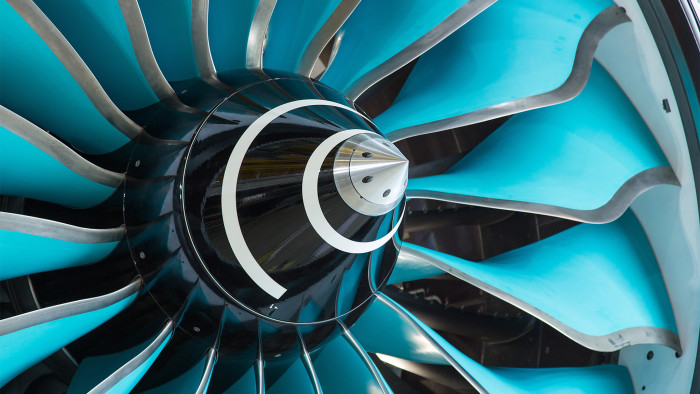New European aerospace engines and parts address environmental concerns

Simply sign up to the Aerospace & Defence myFT Digest -- delivered directly to your inbox.
Global air traffic surged over the past year and is expected to more than double over the next two decades.
Worldwide airborne travel, measured by the total number of kilometres travelled by paying passengers, grew 7.4 per cent last year. That was well above the past decade’s average annual growth of 5.5 per cent, according to Iata, the global industry trade body. Data from Iata also show more than 3.5bn passenger journeys were flown in 2015. The number is expected to exceed 7bn in 20 years.
European manufacturer Airbus anticipates worldwide demand of 32,585 new aircraft over the next 20 years — a figure not too different from estimates by US rival Boeing that 38,050 aircraft will be required. While this could only be good news for aircraft makers, engine manufacturers and their supply chains, there are also environmental considerations.
“Manufacturers are investing in producing cleaner, quieter aircraft, but the industry growth rate always outpaces the improvement in the efficiency of new aircraft,” says Tim Johnson, director of the Aviation Environment Federation (AEF).
The organisation represents communities living around the UK’s airports and whose immediate concerns are noise and air quality. Mr Johnson says this growth is already hampering decision-making on large UK aviation infrastructure, such as Heathrow’s proposed third runway in London, which he believes is “being delayed only by uncertainty about how to manage the environmental consequences”.
Aviation produces 2 per cent of carbon dioxide emissions globally and 12 per cent of the transport sector’s CO2 emissions. This compares with 74 per cent from road transport, according to the Air Transport Action Group, which lobbies for the industry.
Following demands from campaign groups, as well as from airlines seeking to cut fuel costs, manufacturers have been under pressure to produce cleaner, quieter and more fuel-efficient aircraft.
Such pressure, building over the past 15 years, has resulted in action to convert these demands into quantifiable goals.
The Advisory Council for Aviation Research and Innovation in Europe, an EU research network, has set out a road map for European aircraft to achieve by 2020 a 50 per cent reduction in fuel consumption, CO2 emissions, and noise levels, as well as 80 per cent less nitrous oxide, compared to 2000.
New technologies, many on display at this week’s Farnborough Airshow, are on course to achieve such goals.
The principal body responsible for funding these efforts is an initiative called Clean Sky, a partnership between the European Commission and the EU’s aerospace sector. Stakeholders include Airbus, the UK’s Cranfield University, engineering group Qinetiq and Rolls-Royce, which is attempting to improve efficiency through initiatives such as the introduction of engine fan blades made out of carbon and titanium (CTi).
“In the future we want to go to engines with larger diameter fans, as these burn less fuel,” says Phil Curnock, chief engineer of future programmes at Rolls-Royce. But the way to do this is to replace titanium with CTi fans on the company’s two new aero-engines Advance and UltraFan that will enter service in 2020 and 2025 respectively, trimming 1,500lb off the weight of a twin-engined aircraft.
In another venture backed by the Clean Sky programme, Airbus Helicopters in 2019 will start flight tests on a high-speed vehicle named LifeRCraft. Looking like a helicopter with added aircraft wings and two forward-facing propellers, it combines hover capability with fast forward flight, enabling it to offer increased speed, at a lower cost, with reduced emissions and noise compared with conventional rotorcraft.
Airbus Helicopters’ Tomasz Krysinski, head of research and innovation, says that in a medical evacuation role, “50 per cent more speed than a conventional helicopter” will enable the LifeRCraft to reach offshore oil platforms and wind farms within the “golden hour”, the time after a traumatic injury when treatment is most likely to be successful.
While Clean Sky has a successful record of pan-European collaboration, the UK’s vote to leave the EU could affect future projects.
“The UK is an important player with a high number of participants including many British SMEs as well as universities,” says Eric Dautriat, Clean Sky’s executive director.
“It is far too early to speculate on the implications of the UK referendum. That will be addressed in due course, once negotiations with the UK begin [on new arrangements with the EU] . . . For the time being, nothing changes.”
Comments